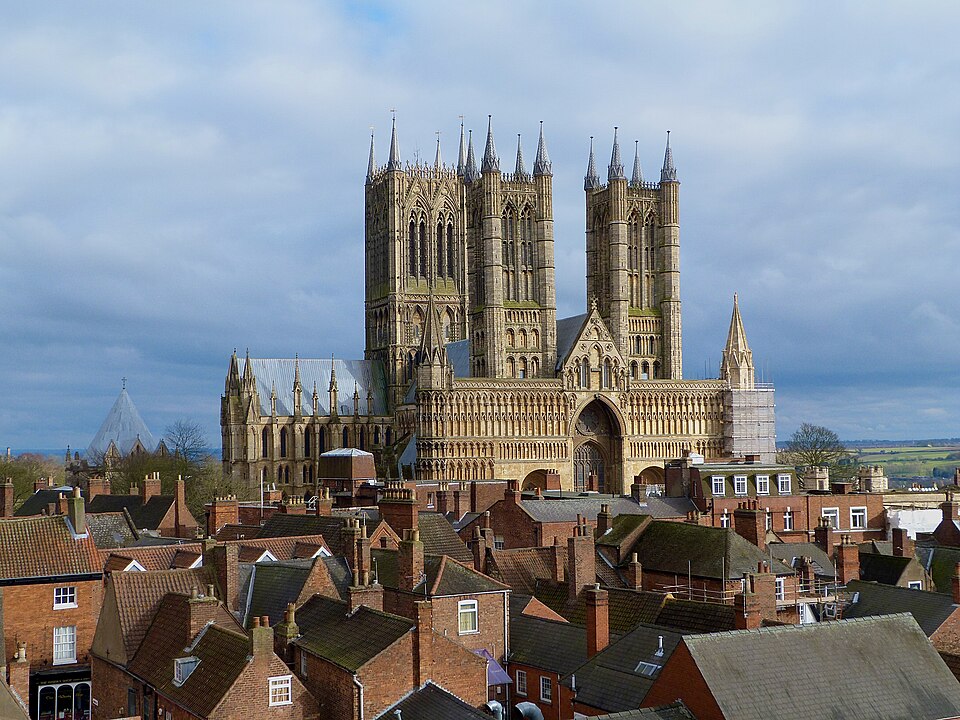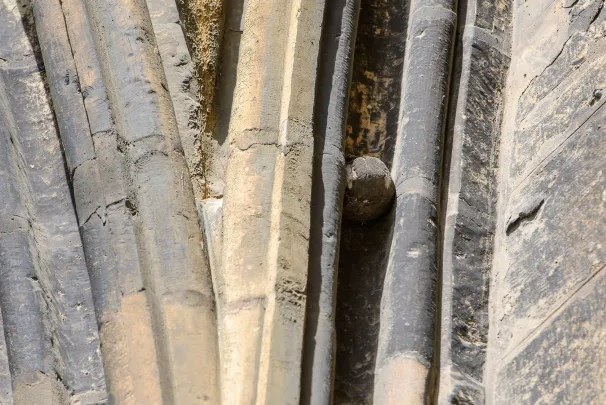The Church of the World’s Oldest Tennis Ball
Lincoln Cathedral, pictured above, is located in Lincoln, England. (Here’s a map.) Construction started nearly a millennium ago, most likely in the year 1072, and it was consecrated on May 11, 1092. In other words, it’s old — and like many old churches still standing, it draws a lot of visitors. According to its website, more than 100,000 people from all over the world enter its halls each year. Some go to pray — the church holds services daily — and many others are there to view the architecture or appreciate the history of the church.
But when the family of Gilbert Bell visits, they’re looking for something else: Gilbert’s tennis ball.
It’s been there for more than a century.
Gilbert Bell was a young English boy in 1914, and his family traveled from Norfolk, England, for reasons unclear. Regardless, they ended up visiting Lincoln Cathedral and Gilbert, like many kids, probably didn’t think it was a lot of fun to visit an old church. There were no iPhones or anything of the sort, so he brought with him something else to keep him amused — a tennis ball. And at some point, Gilbert decided to bounce the ball against an outside wall of the building, a perfectly cromulent use for a tennis ball. The ball would carom off the wall, back to Gilbert, and Gilbert would bounce it off the wall again. If things went to plan, he’d repeat this until someone told him to stop or it was time to go home, whichever came first.
Unfortunately, things did not go to plan. The outer walls of the Lincoln Cathedral aren’t smooth — and the ball made a one-way trip into it. As Gilbert’s nephew, David Bell, later explained to the BBC, “The story in our family goes that Gilbert threw the tennis ball up to the cathedral against the wall and it stuck in a crevice,” as seen below via the Sun.
For the Bell family, the ball became an attraction all to its own. The family makes “regular trips” to the Cathedral, per the BBC, to take a look at Gilbert’s addition to the building’s history. But in 2005, they realized that the ball’s fate may be at risk, because something else appeared on the side of the building — scaffolding. The facade of the Cathedral was undergoing repairs and restoration, and the Bell family was concerned that the ball would be removed.
Rather than ask that the ball stay lodged in place, David and family came up with a more creative idea: they wrote a letter asking that the ball be returned to its rightful owners, the heirs of Gilbert Bell. That wasn’t the outcome they truly wanted — the request was tongue in cheek, as David confirmed to the BBC — but it got the job done. The Cathedral’s leadership took note of the request and, for the first time, acknowledged the presence of the tennis ball. (Their spokesperson told the BBC that no church official had noticed it previously.) And they also told the Bells that the ball wasn’t going to come down, at least not then — the work being done to the exterior of the building wasn’t focused on cleaning out crevices, so the ball wasn’t going to be disturbed.
And, at least as of 2024, it still hasn’t — and probably never will be. That year, Jane Cowan, the Head of Conservation at the Cathedral told Talker News that “At such point as our cycle of conservation reaches that part of the Cathedral, we would have to assess how best to approach the tennis ball as the nature of the materials it is made from is very different from the stone, glass and wood that we are used to dealing with on the Cathedral. But the ideal option would be for us to leave the ball in position as its story is now integral to that of the cathedral. The stories are intertwined and are both much the richer for that.”
And that’s great, because it’s probably the world’s oldest still existing tennis ball. A few years ago, a set from 1916 was auctioned off, and according to the Sun, “the earliest tennis ball held in the Wimbledon Lawn Tennis Museum [also] dates from 1916.” So it’s historic. And more importantly, it may prevent future kids from bouncing their tennis balls off the side of the building.


